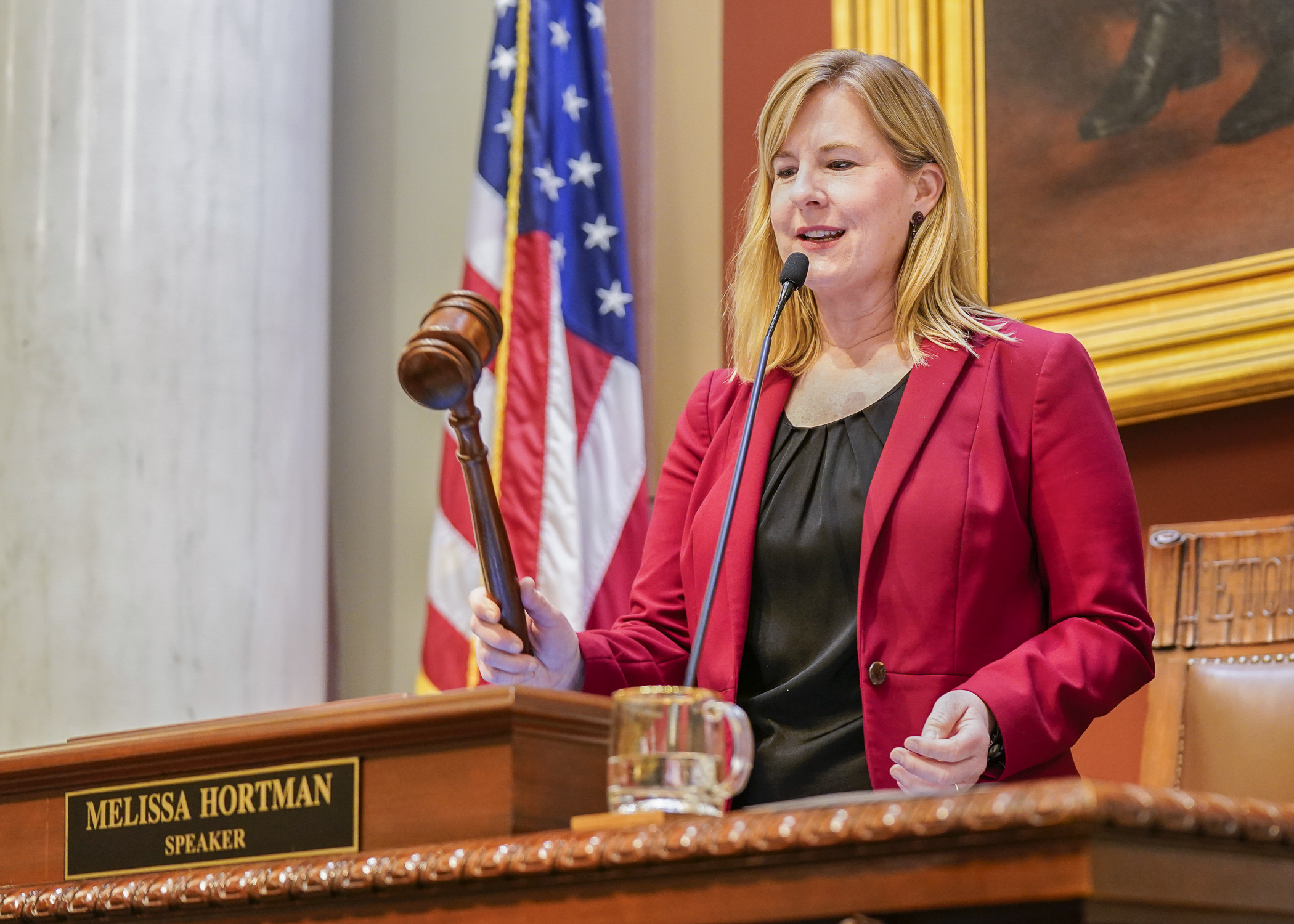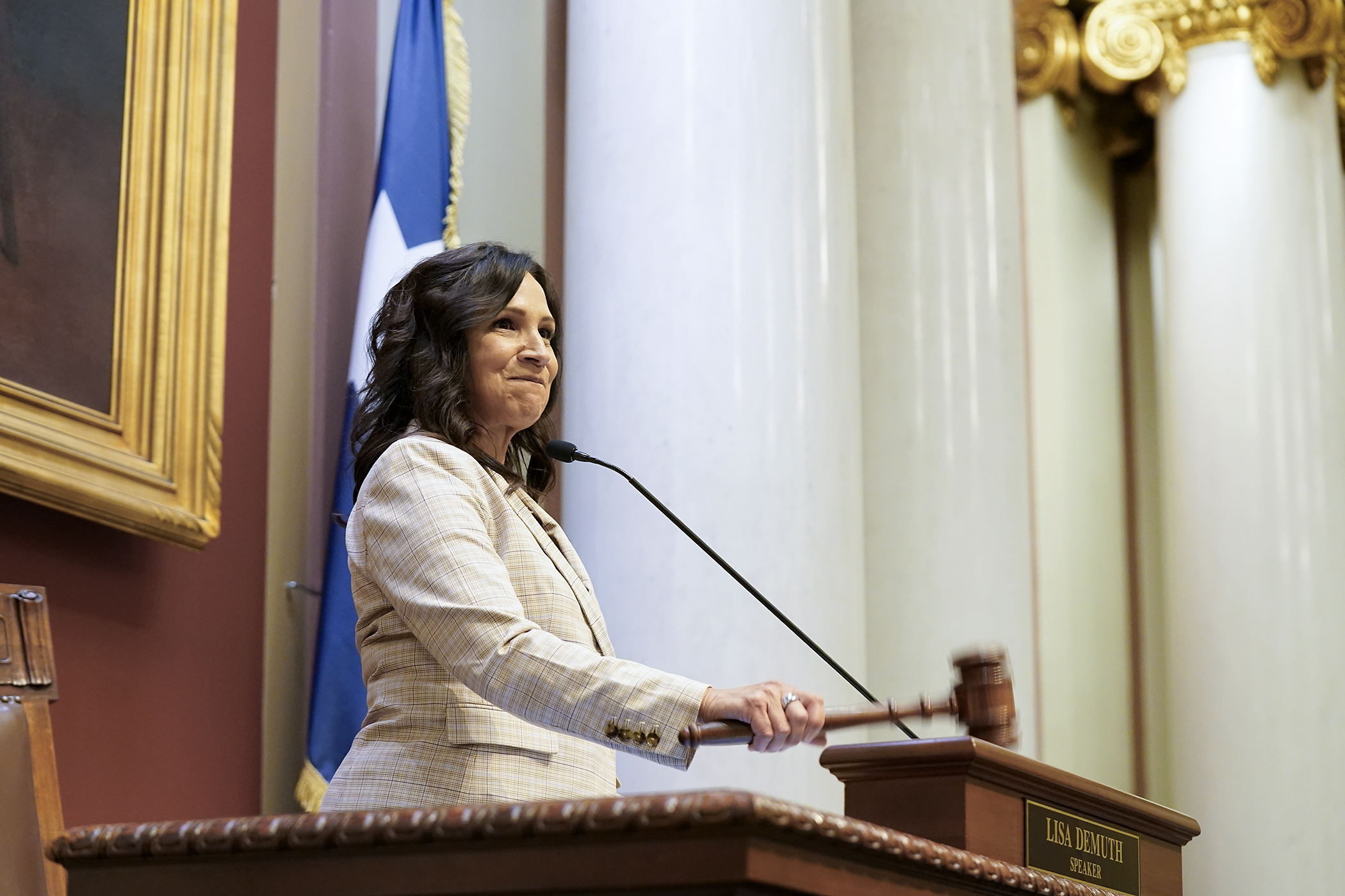DFL bill proposes new tax tier for state's wealthiest to offset potential federal cuts

If you look at this year’s legislative session from the perspective of a storyteller, you could say that the literary device of foreshadowing has come into play.
While discussing bills in committee, one House member or another will sometimes mention looming federal cuts to programs in medical, food or educational assistance, often suggesting that this will end up being the biggest issue facing state governments in 2025.
Such discussions often reach a kind of “we’ll cross that bridge when we come to it” conclusion, but Rep. Aisha Gomez (DFL-Mpls) has decided to be more proactive about a state response. She’s sponsoring HF2591, which would establish a fifth tier of the individual income tax at a rate sufficient to offset lost federal Medicaid funding.
Here’s how it would work: Minnesota Management and Budget would certify to the Department of Revenue the amount of federal Medicaid funding lost because of federal law changes and administrative actions, and the Revenue Department would calculate the income tax rate necessary to offset the loss in revenue for the 2026-2027 biennium.
So consider it kind of a “rate to be determined,” but the new tier would apply to Minnesota taxable income of more than $1.67 million for married joint returns, $1 million for single returns, and $1.33 million for head of household returns.
Currently, Minnesota’s highest individual income tax rate is 9.85%, which is for those making $269,010 or more per year.
On Thursday, the House Taxes Committee laid the bill over for possible omnibus bill inclusion.
“We have a situation with our federal government where we’ve seen a [U.S.] House budget resolution passed some weeks ago,” Gomez said. “It has a negative $880 billion target for energy and commerce and a positive $4.5 trillion target for the Ways and Means Committee. … This $880 billion cut can only come from Medicaid. The $4.5 trillion positive target in Ways and Means is going to extend the Trump tax cuts, which disproportionately benefitted the biggest corporations in the world and multimillionaires and billionaires.
“Medicaid impacts every one of our districts, with 42% of Minnesota children relying on Medicaid for their health insurance. Half of long-term care is paid for not by Medicare, but by Medicaid.”
It’s clear that the majority of House DFL members like the bill, for it has 35 sponsors from that side of the aisle.
Although it’s difficult to calculate the impact of the bill’s changes without knowing a specific amount of federal cuts to the state’s Medical Assistance program, the Revenue Department estimates that, for tax year 2025, approximately 16,160 returns (about 0.5% of all returns) could have an increase in tax, if federal Medicaid funding is reduced. The amount of the increase would depend on the tax rate.
Rep. Patti Anderson (R-Dellwood) defended the federal government’s cuts.
“It would be about a 13% cut at the state level,” she said. “They have to do something about all the fraud.”
“Show me someone, anyone, who believes we have $880 billion in Medicaid fraud,” Gomez replied.
While Rep. Mike Wiener (R-Long Prairie) said that he thought such a law would result in wealthier Minnesotans moving to other states, Rep. Greg Davids (R-Preston), a committee co-chair, said that the bill’s fifth-tier parameters are too ill-defined, concluding, “This is going nowhere.”
Related Articles
Search Session Daily
Advanced Search OptionsPriority Dailies
Speaker Emerita Melissa Hortman, husband killed in attack
By HPIS Staff House Speaker Emerita Melissa Hortman (DFL-Brooklyn Park) and her husband, Mark, were fatally shot in their home early Saturday morning.
Gov. Tim Walz announced the news dur...
House Speaker Emerita Melissa Hortman (DFL-Brooklyn Park) and her husband, Mark, were fatally shot in their home early Saturday morning.
Gov. Tim Walz announced the news dur...
Lawmakers deliver budget bills to governor's desk in one-day special session
By Mike Cook About that talk of needing all 21 hours left in a legislative day to complete a special session?
House members were more than up to the challenge Monday. Beginning at 10 a.m...
About that talk of needing all 21 hours left in a legislative day to complete a special session?
House members were more than up to the challenge Monday. Beginning at 10 a.m...